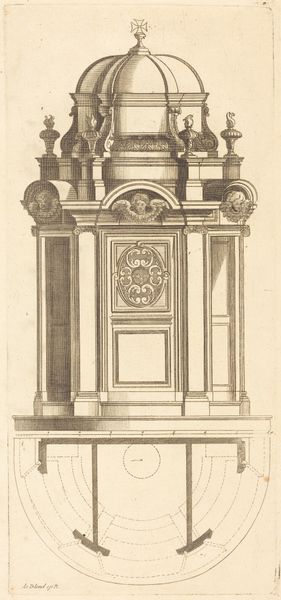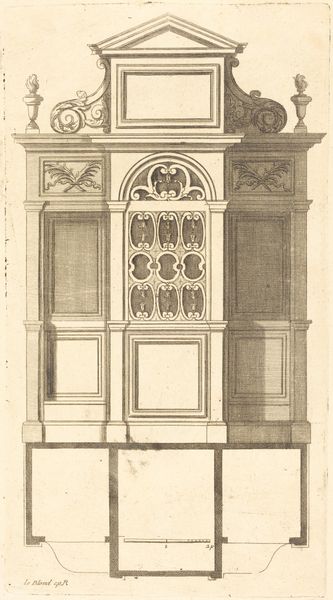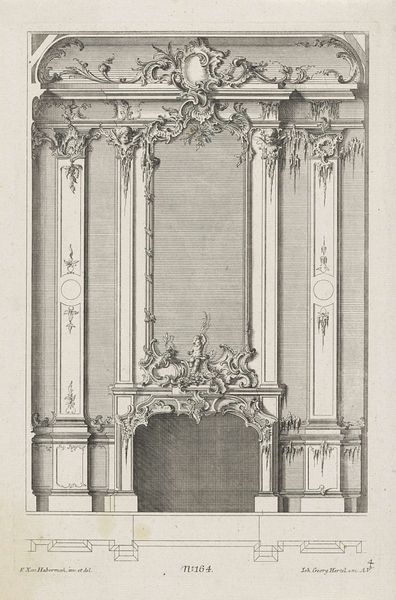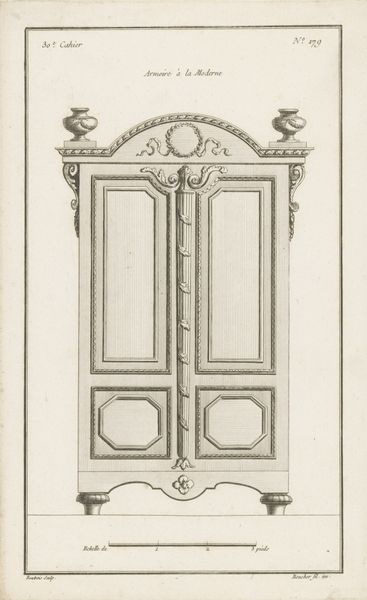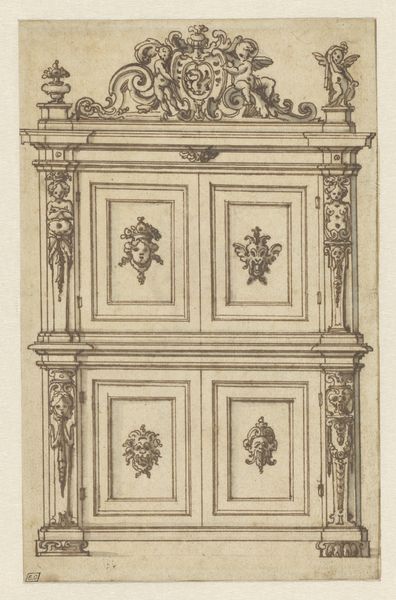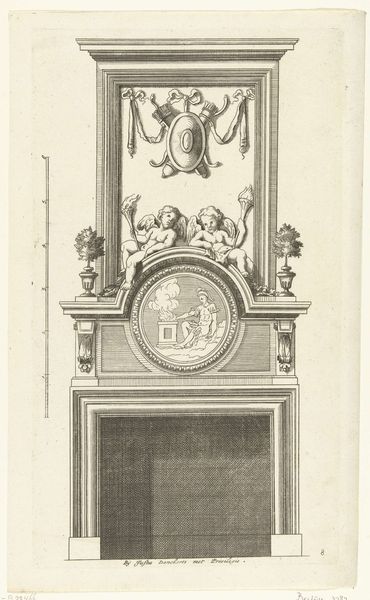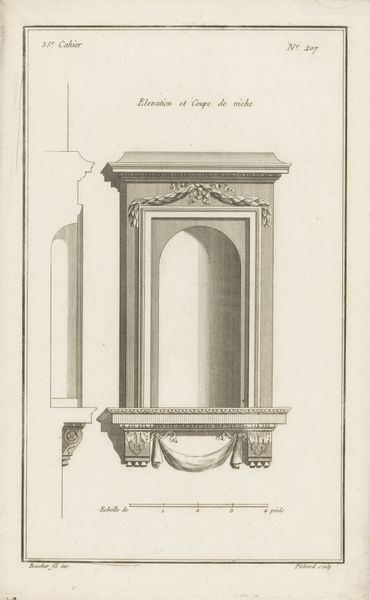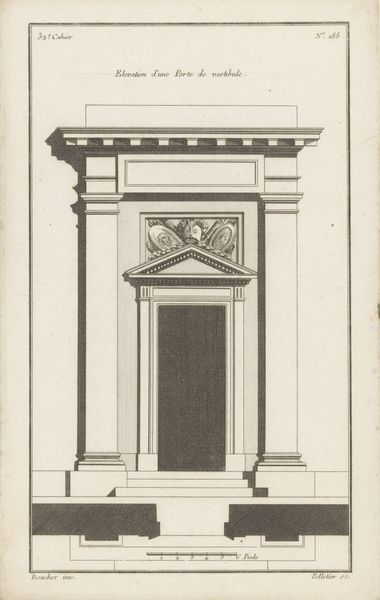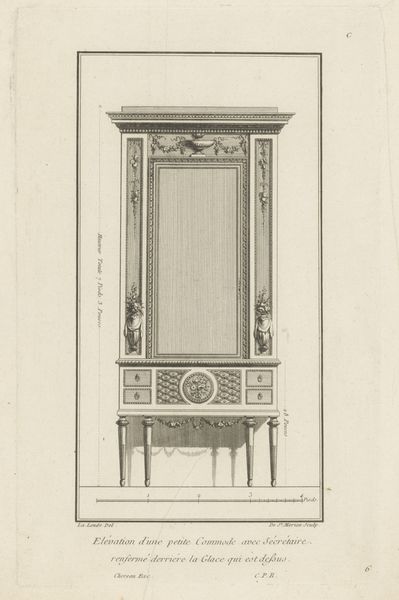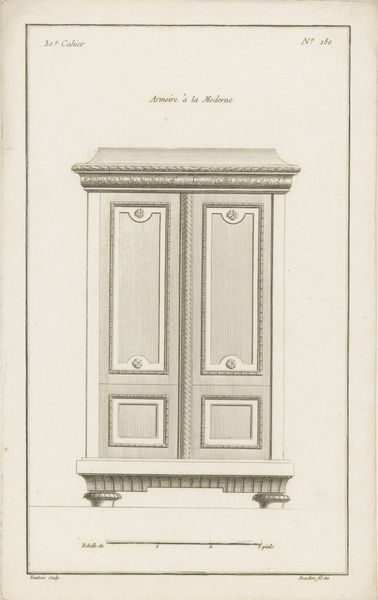
Plan et elevation des plus beaux confessionnaux de Paris, tres fidelemant mesure Possibly 1688
0:00
0:00
drawing, print, engraving, architecture
#
drawing
#
baroque
# print
#
form
#
geometric
#
architectural drawing
#
line
#
engraving
#
architecture
Copyright: National Gallery of Art: CC0 1.0
Curator: Good day. We’re standing before an engraving, “Plan et elevation des plus beaux confessionnaux de Paris, tres fidelemant mesure,” attributed to Jean Le Blond and likely created around 1688. It's a highly detailed architectural drawing. Editor: It's strikingly formal, even imposing. The symmetry is intense, almost… constricting. All those right angles, the echoing panels... Makes me wonder about the power dynamics at play within such a space. Curator: Exactly. Le Blond presents us with not just a beautiful drawing, but also a very rigid design. Notice the flanking Corinthian columns and the ornate pediment topped with a cross. The central panel features a swirling floral design, an interesting counterpoint to all that severity. Editor: Yes, the contrast is intriguing! It’s like this delicate rebellion against the cold stone, a whisper of humanity trying to break through the prescribed structure. And those symmetrical curves – are they supposed to soften the experience of confession? Or perhaps illustrate something deeper about the penitent's "flowery language?" Curator: Or it could suggest the divine grace permeating the experience, or so this image would suggest. Baroque art certainly loved its layered symbolism, and a confessional booth—especially those deemed the "most beautiful in Paris"—would have been designed to inspire specific emotional and psychological responses. Editor: The engraving is also surprisingly spare in its detail, as the artist includes geometric indications on what feels like negative space. That really heightens that sense of a tightly controlled environment, which, when I think about it, feels like the whole point. The church building imposes control by organizing space, and perhaps inner thought, or speech. Curator: Well, confession is nothing if not structured storytelling, a pre-scripted ritual played out in a carefully defined space. In art, especially that related to religious structures, space and shape becomes integral to dictating experience, don’t you think? Editor: Absolutely. Even today, that imagery retains such weight, doesn't it? Think how many films utilize spaces like these for moments of crucial psychological transformation or to simply say "Catholic guilt." Curator: And with the weight it implies, this is more than an engraving; it captures an entire world of social and spiritual regulation! It truly gives us food for thought. Editor: Indeed. This piece reminds us how physical spaces reflect – and actively shape – our inner selves. Fascinating.
Comments
No comments
Be the first to comment and join the conversation on the ultimate creative platform.

